Reading view
How vulnerable is critical infrastructure to cyberattack in the US?

Our water, health, and energy systems are increasingly vulnerable to cyberattack.
Now, when tensions escalate - like when the US bombed nuclear facilities in Iran this month - the safety of these systems becomes of paramount concern. If conflict erupts, we can expect it to be a "hybrid" battle, Joshua Corman, executive in residence for public safety & resilience at the Institute for Security and Technology (IST), tells The Verge.
"With great connectivity comes great responsibility."
Battlefields now extend into the digital world, which in turn makes critical infrastructure in the real world a target. I first reached out to IST for their expertise on this issue back in 2021, when a ransomware attack forced the Colonial Pipeline - a major artery transporting nearly half of the east coast's fuel supply - offline for nearly a week. Since then, The Verge has also covered an uptick in cyberattacks against community water systems in the US, and America's attempts to thwart assaults supported by other governments.
It's not time to panic, Corman reassures me. But it is important to reevaluate how we safeguard hospitals, water supplies, and other lifelines from cyberattack. There hap …
Spanish blackout report: Power plants meant to stabilize voltage didn’t
The blackout that took down the Iberian grid serving Spain and Portugal in April was the result of a number of smaller interacting problems, according to an investigation by the Spanish government. The report concludes that several steps meant to address a small instability made matters worse, eventually leading to a self-reinforcing cascade where high voltages caused power plants to drop off the grid, thereby increasing the voltage further. Critically, the report suggests that the Spanish grid operator had an unusually low number of plants on call to stabilize matters, and some of the ones it did have responded poorly.
The full report will be available later today; however, the government released a summary ahead of its release. The document includes a timeline of the events that triggered the blackout, as well as an analysis of why grid management failed to keep it in check. It also notes that a parallel investigation checked for indications of a cyberattack and found none.
Oscillations and a cascade
The document notes that for several days prior to the blackout, the Iberian grid had been experiencing voltage fluctuations—products of a mismatch between supply and demand—that had been managed without incident. These continued through the morning of April 28 until shortly after noon, when an unusual frequency oscillation occurred. This oscillation has been traced back to a single facility on the grid, but the report doesn't identify it or even indicate its type, simply referring to it as an "instalación."
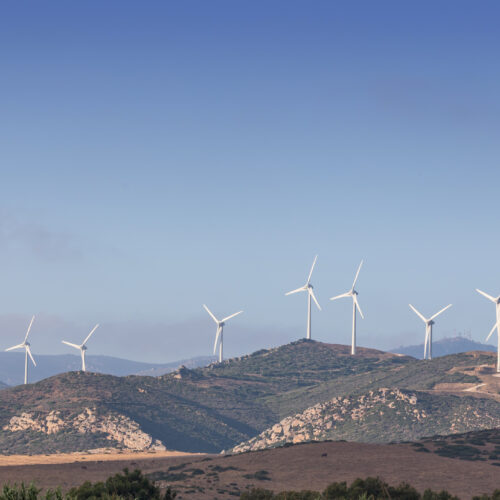
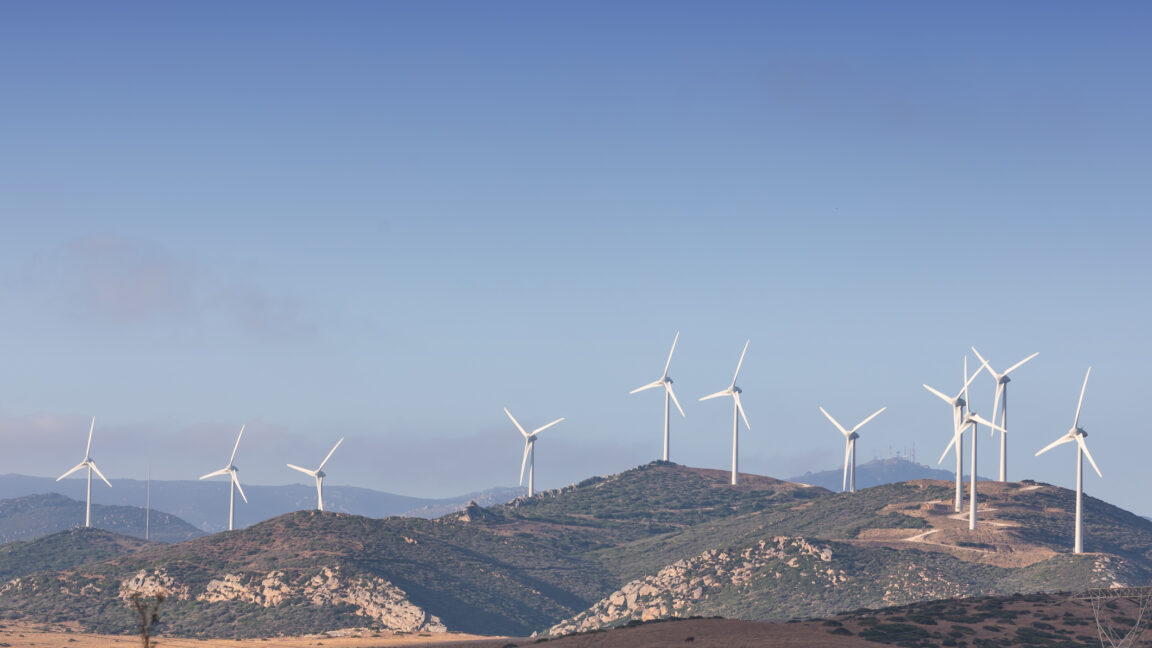
© fhm
Air Conditioners Can Actually Support the Power Grid. Here’s How

Air conditioners place a heavy burden on the grid when the weather gets hot, but this strategy shows they can actually help—and without compromising your home's temperature.
Battery Recyclers Don’t Know How to Respond to Trump’s Clean Energy Reversal

The president hasn't directly targeted the nascent industry, but his clean energy rollbacks could hurt it.
Could floating solar panels on a reservoir help the Colorado River?
GILA RIVER INDIAN RESERVATION, Ariz.—About 33 miles south of Phoenix, Interstate 10 bisects a line of solar panels traversing the desert like an iridescent snake. The solar farm’s shape follows the path of a canal, with panels serving as awnings to shade the gently flowing water from the unforgiving heat and wind of the Sonoran Desert.
The panels began generating power last November for the Akimel O’otham and Pee Posh tribes—known together as the Gila River Indian Community, or GRIC—on their reservation in south-central Arizona, and they are the first of their kind in the US. The community is studying the effects of these panels on the water in the canal, hopeful that they will protect a precious resource from the desert’s unflinching sun and wind.
In September, GRIC is planning to break ground on another experimental effort to conserve water while generating electricity: floating solar. Between its canal canopies and the new project that would float photovoltaic panels on a reservoir it is building, GRIC hopes to one day power all of its canal and irrigation operations with solar electricity, transforming itself into one of the most innovative and closely watched water users in the West in the process.
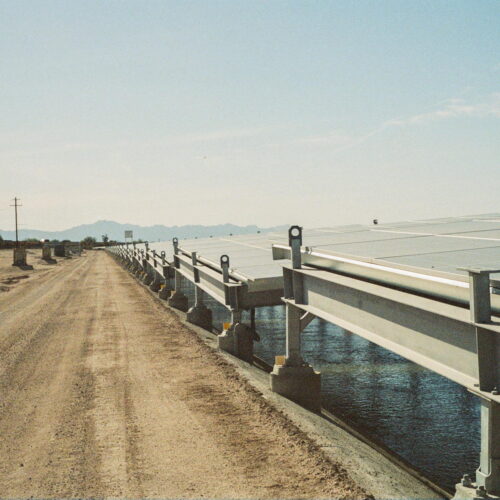
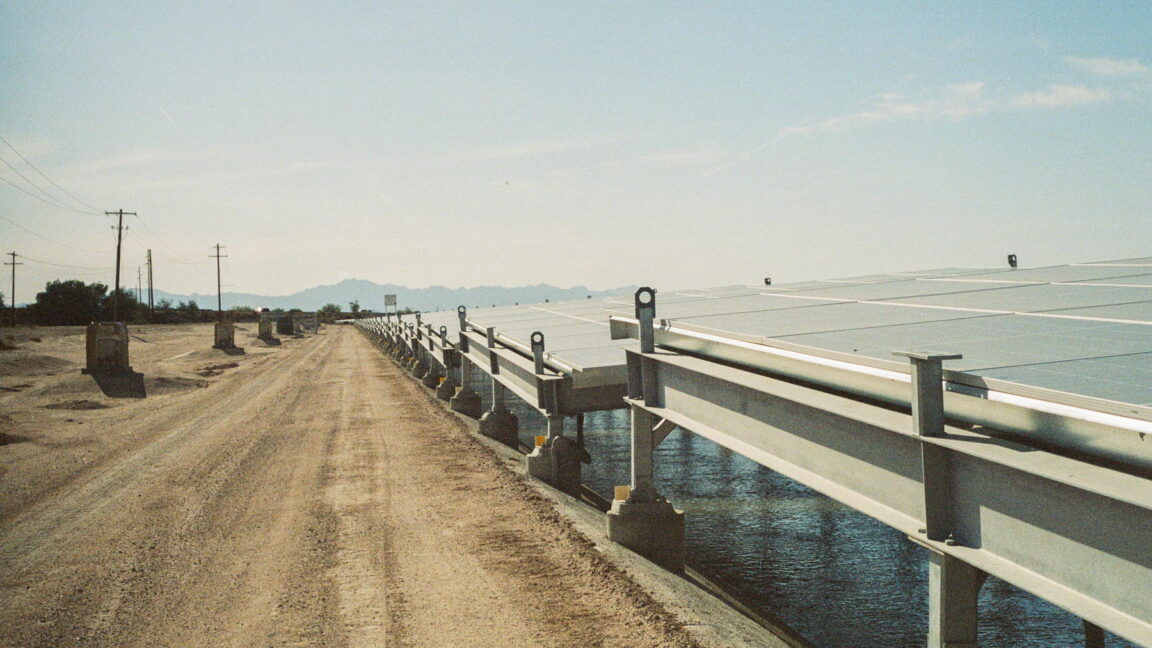
© Jake Bolster/Inside Climate News
Trump signs executive orders meant to resurrect US nuclear power
Currently, there are no nuclear power plants scheduled for construction in the US. Everybody with plans to build one hasn't had a reactor design approved, while nobody is planning to use any of the approved designs. This follows a period in which only three new reactors have entered service since 1990. Despite its extremely low carbon footprint, nuclear power appears to be dead in the water.
On Friday, the Trump administration issued a series of executive orders intended to revive the US nuclear industry. These include plans to streamline the reactor approval process and boost the construction of experimental reactors by the Department of Energy. But they also contain language that's inconsistent with other administration priorities and fundamentally misunderstands the use of nuclear power. Plus, some timelines might be, shall we say, unrealistic: three new experimental reactors reaching criticality in just over a year.
Slow nukes
The heyday of nuclear plant construction in the US was in the 1970s and 80s. But the 1979 partial meltdown at the Three Mile Island plant soured public sentiment toward nuclear power. This also came at a time when nuclear plants typically generated only half of their rated capacity, making them an expensive long-term bet. As a result, plans for many plants, including some that were partially constructed, were canceled.
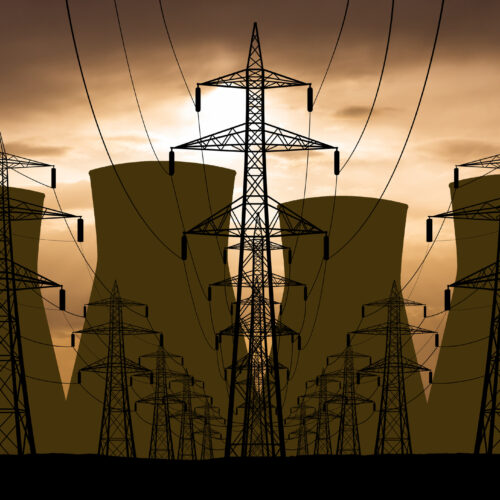
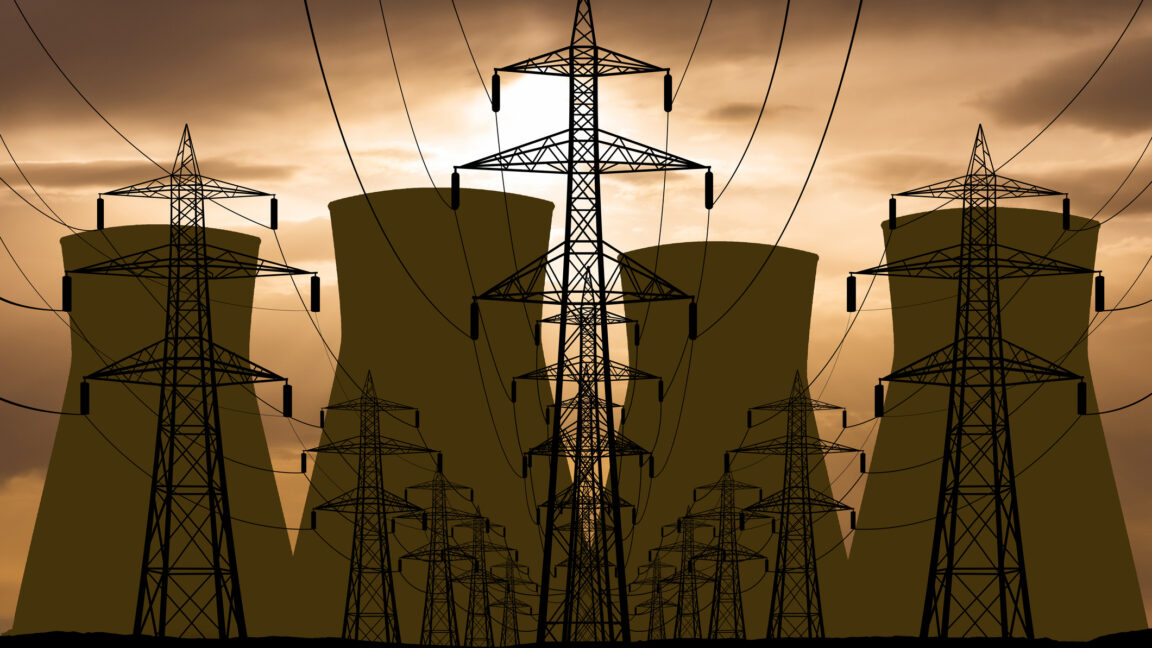
© Anton Petrus
Meta faces Democratic probe into plans to power a giant data center with gas

Meta’s building a new AI data center so massive in Louisiana that the local utility company has plans to construct three new gas-fired power plants to provide it with enough electricity. Now, advocates and lawmakers are pressing Meta for answers about how it’ll clean up pollution stemming from the data center’s energy consumption.
Sen. Sheldon Whitehouse (D-RI), ranking member of the Senate Committee on Environment and Public Works, shot off a letter to Meta CEO Mark Zuckerberg on Wednesday demanding answers about how much energy the data center would use and the greenhouse gas emissions that would be generated. Powering the new data center with gas “flies in the face of Meta’s climate commitments,” the letter says.
Tech companies are rushing to build out data centers to train and run new AI tools, driving up electricity demand. In this case, power utility Entergy wants to meet that demand with new gas infrastructure, raising concerns about the impact Meta’s data center will have on the environment and local residents.
“We urgently need corporate responsibility”
“Meta’s backslide from its own climate pledges risks triggering broader economic harm at a time when we urgently need corporate responsibility,” Sen. Whitehouse said in a statement emailed to The Verge.
In 2020, Meta pledged to reach net-zero emissions across its operations, supply chain, and consumer use of its products by the end of the decade. But the company’s carbon footprint is larger now than it was when it set that goal, according to its latest sustainability report, as it doubles down on AI.
The company has tried to reduce its emissions by matching its electricity use with equal purchases of renewable energy. It’s a strategy Meta and other big companies often take: pay to support new clean energy projects to try to cancel out the environmental effects of your facilities plugging into a power grid that runs on dirty energy. Environmental advocates are increasingly concerned that this strategy still burdens communities with local pollution, and that the pressure to meet rising electricity demand from AI is boosting fossil fuel use rather than renewable energy.
We’re seeing that tussle play out in Richland Parish, Louisiana, where Meta has plans to build its largest data center to date. It’s spending $10 billion on the project, the company announced in December. Once complete, the campus would span 4 million square feet, about as large as 70 football fields. But the project is moot unless Meta can ensure there will be enough electricity available for all those servers, a problem it’s working with Entergy to solve. Entergy proposed building three entirely new gas plants with a total capacity of 2,260 megawatts to support the data center, but it has to get regulatory approval first.
Some advocates contend that there hasn’t been enough transparency around Meta’s data center plans to help the public understand the potential impact on the local power grid. The New Orleans-based Alliance for Affordable Energy and the Union of Concerned Scientists filed a motion in March asking the Louisiana Public Service Commission to add Meta as an official party to proceedings over whether to approve construction of the new gas plants. Doing so would compel the company to disclose more information, and the commission is scheduled to consider the motion on Monday.
“It’s hard to wrap your brain around [whether] a facility like this either might be good for your community or bad for your community without understanding the possible impact to your electrical system, your bills, and your water,” says Logan Burke, executive director of the Alliance for Affordable Energy.
There are already forecasts that rapidly growing data center electricity demand could raise electricity bills in the US. Meta said in December that it would contribute $1 million a year to an Entergy program that helps older adults and people with disabilities afford their bills. Data centers have also been notorious water-guzzlers, although Meta says it would invest in projects to restore more water than it would consume.
Sen. Whitehouse’s letter, meanwhile, asks Meta to answer a list of questions by May 28th. On top of questions about the data center’s electricity use and greenhouse gas emissions, Whitehouse wants to know what the justification is for building gas-fired power plants rather than renewable energy alternatives. And it presses Meta to explain how the proposal aligns with its 2030 climate goal.
Meta maintains that it’ll continue matching its electricity use with support for renewable energy, including a commitment to help fund 1,500 megawatts of new solar and battery resources in Louisiana. It also said it would help fund the cost of adding technology to at least one power plant that would capture carbon dioxide emissions. Whitehouse wants to know how much funding it will provide and how much carbon will be captured. Carbon capture tech has been prohibitively expensive to deploy and costs are often offset by using the captured CO2 to produce more fossil fuels through a process called enhanced oil recovery.
“We received the letter and look forward to providing a response,” Meta spokesperson Ashley Settle said in an email to The Verge. “We believe a diverse set of energy solutions are necessary to power our AI ambitions – and we continue to explore innovative technology solutions.”
Entergy didn’t immediately respond to inquiries from The Verge. It has a goal of making sure that 50 percent of its generating capacity is carbon pollution-free by 2030. But the utility said that gas “is the lowest reasonable cost option available that can support the 24/7 electrical demands of a large data center like Meta,” in a statement to Fast Company, which first reported on Whitehouse’s letter.
Renewable power reversing China’s emissions growth
China has been installing renewable energy at a spectacular rate and now has more renewable capacity than the next 13 countries combined, and four times that of its closest competitor, the US. Yet, so far at least, that hasn't been enough to offset the rise of fossil fuel use in that country. But a new analysis by the NGO Carbon Brief suggests things may be changing, as China's emissions have now dropped over the past year, showing a 1 percent decline compared to the previous March. The decline is largely being led by the power sector, where growth in renewables has surged above rising demand.
This isn't the first time that China's emissions have gone down over the course of a year, but in all previous cases the cause was primarily economic—driven by things like the COVID pandemic or the 2008 housing crisis. The latest shift, however, was driven largely by the country's energy sector, which saw a 2 percent decline in emissions over the past year.
 China's emissions have shown a slight decline over the last year, despite economic growth and rising demand for electricity.
Credit:
Carbon Brief
China's emissions have shown a slight decline over the last year, despite economic growth and rising demand for electricity.
Credit:
Carbon Brief
Carbon Brief put the report together using data from several official government sources, including the National Bureau of Statistics of China, National Energy Administration of China, and the China Electricity Council. Projections for future growth come from the China Wind Energy Association and the China Photovoltaic Industry Association.
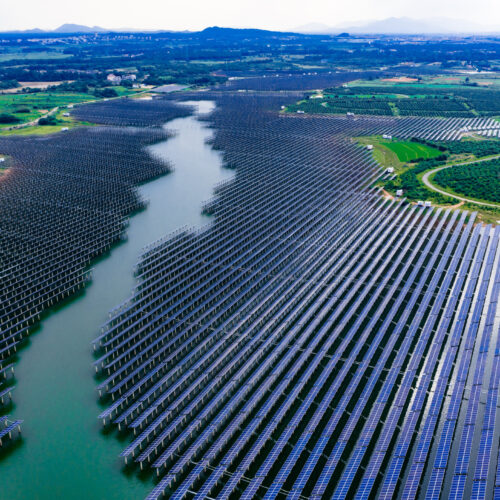

© Yangna
Donald Trump takes aim at more water and energy efficiency standards

Donald Trump signed a presidential memorandum Friday afternoon directing the Department of Energy to “consider using all lawful authority to rescind” or weaken regulations for water and energy efficiency for dishwashers and washing machines. The action also includes water use standards for showers, faucets, toilets, and urinals.
It closes out a week of attacks on policies meant to save Americans money by incentivizing manufacturers to make products that save water and energy. Earlier in the week, CNN and E&E News reported that the Trump administration would shutter the Energy Star program as part of a “reorganization” planned at the Environmental Protection Agency.
Energy Star certifies products for energy efficiency, allowing consumers to choose the most energy-efficient home appliances by spotting the recognizable blue Energy Star label. The rules President Trump is targeting now are actually consumer protections, meant to ensure that any customer can purchase something that meets reasonable efficiency standards.
“Congress enacted these laws, the president can’t just decide that they’re going to go away.”
A White House fact sheet says the Secretary of Energy should work with the Office of Legislative Affairs to make recommendations to Congress on any water pressure “or related energy efficiency laws” that ought to change or be repealed altogether.
It also says the Secretary of Energy should pause enforcement of the rules mentioned in the memorandum until they’re rescinded or revised. “The Federal Government should not impose or enforce regulations that make taxpayers’ lives worse,” the presidential memorandum says.
“It’ll only raise costs for consumers to get rid of these standards, if they get rid of these standards,” says Andrew deLaski, executive director of the Appliance Standards Awareness Project. “Congress enacted these laws, the president can’t just decide that they’re going to go away.” deLaski also notes that while the White House says it wants to get rid of “useless water pressure standards,” the rules mentioned in the memorandum actually target efficiency standards since water pressure depends on the plumbing system connected to the device.
Trump also signed four bills approved through the Congressional Review Act undoing Biden-era efficiency standards for water heaters, refrigerators, walk-in coolers, and more. In April, the president signed an executive order to purportedly make “America’s showers great again” by rescinding an Obama-era definition of showerheads that raised efficiency standards.
Update, May 10th: This story has been updated with more information about water pressure from Andrew deLaski.
Data centers say Trump’s crackdown on renewables bad for business, AI
The US data center industry has warned that the Trump administration’s crackdown on renewable energy could slow its growth and undermine Washington’s goal to win the global artificial intelligence race.
Renewables have become a flashpoint since Donald Trump re-entered the White House, with his administration suspending clean energy developments on federal land, pausing federal loans, and last month canceling high-profile projects such as Equinor’s $5 billion Empire Wind site.
For tech companies struggling to secure reliable energy supplies to power and train AI, a clampdown on renewables could create power bottlenecks, drive up costs, and push operators towards dirtier energy, experts said.
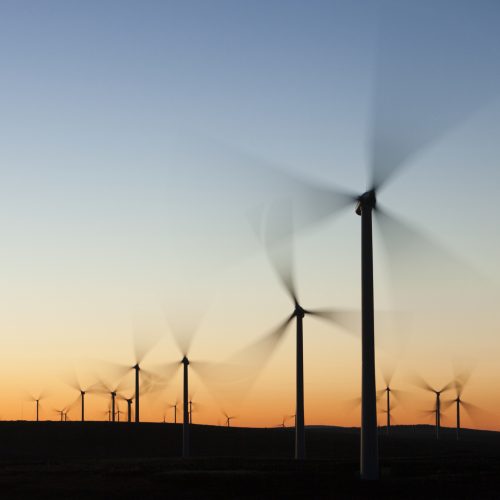
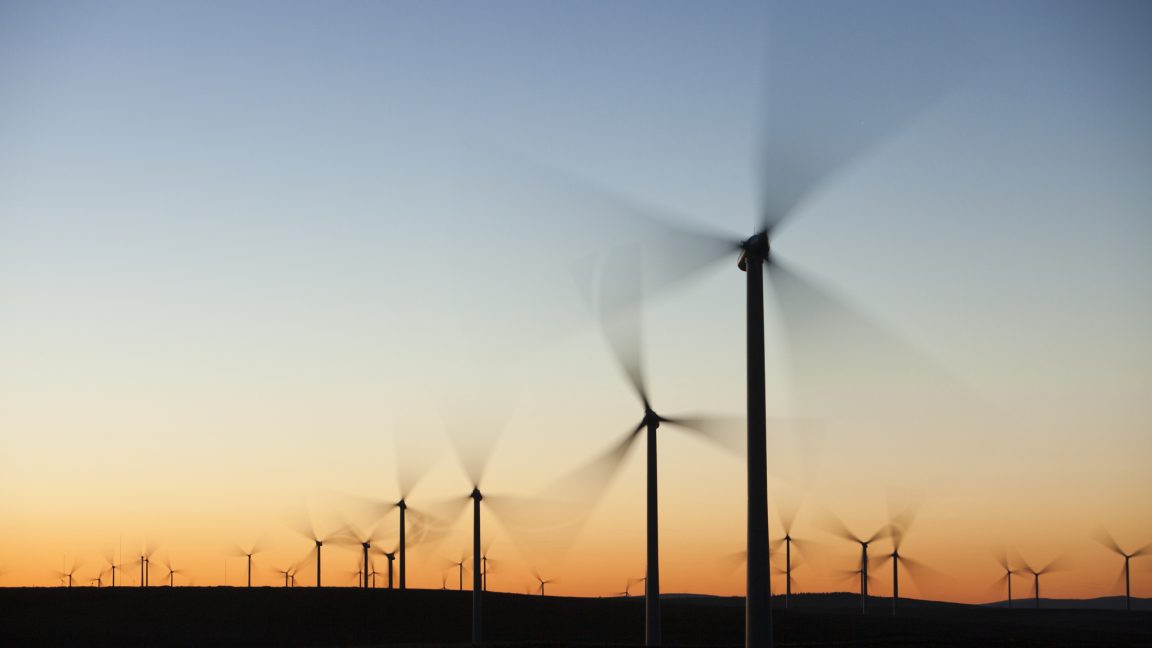
© Ashley Cooper
Spain is about to face the challenge of a “black start”
Since the Iberian Peninsula lost power in a massive blackout, grid operators are in the process of trying to restore power to millions of customers and businesses. As you might imagine, the process—termed a "black start"—is quite a bit more challenging than flicking on a switch. However, the challenge is made considerably more difficult because nearly everything about the system—from the management hardware that remotely controls the performance of the grid to the power plants themselves—needs power to operate.
Restarting the grid
You might think that a power plant could easily start generating power, but in reality, only a limited number of facilities have everything they need to handle a black start. That's because it takes power to make power. Facilities that boil water have lots of powered pumps and valves, coal plants need to pulverize the fuel and move it to where it's burned, etc. In most cases, black-start-rated plants have a diesel generator present to supply enough power to get the plant operating. These tend to be smaller plants, since they require proportionally smaller diesel generators.
The initial output of these black start facilities is then used to provide power to all the plants that need an external power source to operate. This has to be managed in a way that ensures that only other power plants get the first electrons to start moving on the grid, otherwise the normal demand would immediately overwhelm the limited number of small plants that are operating. Again, this has to be handled by facilities that need power in order to control the flow of energy across the grid. This is why managing the grid will never be as simple as "put the hardware on the Internet and control it remotely," given that the Internet also needs power to operate.
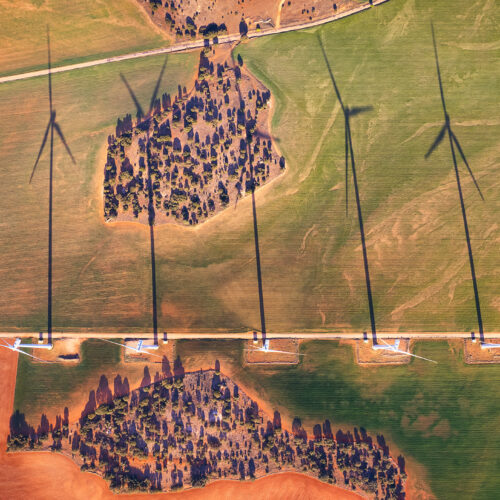

© Juan Maria Coy Vergara
Bending to industry, Donald Trump issues executive order to “expedite” deep sea mining

Donald Trump wants to mine the depths of the ocean for critical minerals ubiquitous in rechargeable batteries, signing an executive order on Thursday to try to expedite mining within US and international waters.
It’s a brash move that critics say could create unknown havoc on sea life and coastal economies, and that bucks international agreements. Talks to develop rules for deep-sea mining are still ongoing through the International Seabed Authority (ISA), a process that missed an initial 2023 deadline and has continued to stymie efforts to start commercially mining the deep sea.
“A dangerous precedent”
“Fast-tracking deep-sea mining by bypassing the ISA’s global regulatory processes would set a dangerous precedent and would be a violation of customary international law,” Duncan Currie, legal adviser for the Deep Sea Conservation Coalition that has advocated for a moratorium on deep sea mining, said in a press statement.
The ISA was established by the 1982 United Nations Convention on the Law of the Sea. More than 160 nations have ratified the convention, but the United States has not. Ignoring the convention, the executive order Trump signed directs federal agencies to expedite the process for issuing licenses to companies seeking to recover minerals “in areas beyond national jurisdiction” in accordance with the 1980 US Deep Seabed Hard Mineral Resources Act. A country’s territorial jurisdiction only extends roughly 200 nautical miles from shore.
The Trump administration wants to work with industry “to counter China’s growing influence over seabed mineral resources,” the executive order says. However, no country has yet to commercially mine the deep ocean where depths reach about 656 feet (200 meters) in international waters. There have already been efforts to explore parts of the ocean floor rich in nickel, copper, cobalt, iron, and manganese sought after for rechargeable batteries, though, and China is a leading refiner of many critical minerals.
China responded on Friday: the BBC reported Chinese foreign ministry spokesman Guo Jiakun as saying that Trump’s move “violates international law and harms the overall interests of the international community.”
The Metals Company announced in March that the Canadian company had already “met with officials in the White House” and planned to apply for permits under existing US mining code to begin extracting minerals from the high seas.
California-based company Impossible Metals asked the Trump administration earlier this month to auction off mining leases for areas off the coast of American Samoa, which would be within US-controlled waters. Trump’s executive order also directs the Secretary of the Interior to expedite the process for leasing areas for mining within US waters.
Companies seeking to exploit offshore mineral resources argue that it would cause less harm than mining on land. Their opponents contend that there’s still too little research to even understand how widespread the effects of deep sea mining could be on marine ecosystems and the people who depend on them. Recent studies have warned of “irreversible” damage and loud noise affecting sea life, and one controversial study raises questions of whether the deep sea could be an important source of “dark oxygen” for the world.
More than 30 countries — including Palau, Fiji, Costa Rica, Canada, Mexico, Brazil, New Zealand, France, Germany, and the United Kingdom — have called for a ban or moratorium on deep-sea mining until international rules are in place to minimize the potential damage.
“The harm caused by deep-sea mining isn’t restricted to the ocean floor: it will impact the entire water column, top to bottom, and everyone and everything relying on it,” Jeff Watters, vice president for external affairs at the nonprofit Ocean Conservancy said in a press release.
Meta's data center could be 'transformative' for Louisiana, utility says—as long as customers pay the $5 billion power bill
Evelyn Hockstein/REUTERS
- Meta is building a $10 billion AI data center in northeast Louisiana.
- Entergy Louisiana says it needs to build a major new natural gas plant to power the facility.
- The utility wants permission to pass the plant's construction costs onto its entire customer base.
In Louisiana, a battle is heating up over who will pay for the new power plants needed to serve the $10 billion data center Meta is building in the state's northeastern corner.
Meta announced in December the 2,000-acre Richland Parish data center campus, which is expected to be completed in 2030. The company plans to use the data center to train AI models.
Consumer advocates and climate groups filed new testimony with the Louisiana Public Service Commission on April 11, pushing the state regulator to reject a request by Meta's electricity provider to shift $5 billion in construction costs for the plants on its entire customer base.
Entergy Louisiana has proposed building three new natural gas power plants to serve Meta's data centers in the state. As an investor-owned utility, Entergy can seek regulatory approval to bill its customers for the costs of building the new plants as long as it successfully shows that the plants are in the public interest.
Entergy has argued that Meta's data center could be "transformative" for Lousiana once built, saying the facility could provide 300 to 500 jobs with an average salary of $82,000.
The testimony from advocates and climate groups argued that the utility's 1.1 million electric customers shouldn't have to foot the bill for Meta's power appetite.
Entergy did not respond to a request for comment from Business Insider. Meta declined to comment.
Beyond the $5 billion in cost recovery for the plants, the utility's plan would "put other ratepayers at risk of having to absorb hundreds of millions, if not billions of dollars, of additional costs" associated with Meta's data center, said Cathy Kunkel, an energy consultant testifying on behalf of the Union of Concerned Scientists and Alliance for Affordable Energy.
That's because Meta's power needs have grown since the Big Tech giant first announced its plans to build an AI data center in Louisiana, adding to Entergy's costs of service.
Earlier this year, Meta was planning for more than two gigawatts of capacity in Louisiana, according to a Threads post by Meta CEO Mark Zuckerberg in January. That amount of electricity is double what is being planned at the Crusoe data center in Abilene, Texas, widely thought to be the first site for Stargate, a $500 billion joint venture between Oracle, OpenAI, and SoftBank to build AI data centers in the US.
Since then, Meta has asked Entergy for even more electricity, according to the utility's filings with the LPSC. The exact amount requested is unknown, as the information is redacted from the filings.
Saddling customers with Meta's costs is especially risky given the uncertainties surrounding AI's electricity demand, Kunkel said. AI models could become more energy efficient in the future, or companies could focus more on energy efficiency as a means to enhance profit, she said. That could result in Meta "choosing to scale back or exit" the project early. Recent reports that Amazon and Microsoft are pulling out of data center leases have helped stoke concern that the AI development boom is slowing down.
Entergy's request for cost recovery has attracted a wide range of "intervenors," or parties that want to weigh in with an opinion before the LPSC. Even Walmart in Louisiana has testified, seeking assurances that Meta's escalating power demand won't affect it and other Entergy customers in the state.
Have a tip? Contact this reporter on Signal at 929-524-6964. Use a nonwork device. Here's our guide to sharing information securely.
Trump throws coal a lifeline, but the energy industry has moved on
As President Donald Trump signed a slew of executive orders Tuesday aimed at keeping coal power alive in the United States, he repeatedly blamed his predecessor, Democrats, and environmental regulations for the industry’s dramatic contraction over the past two decades.
But across the country, state and local officials and electric grid operators have been confronting a factor in coal’s demise that is not easily addressed with the stroke of a pen: its cost.
For example, Maryland’s only remaining coal generating station, Talen Energy’s 1.3-gigawatt Brandon Shores plant, will be staying open beyond its previously planned June 1 shutdown, under a deal that regional grid operator PJM brokered earlier this year with the company, state officials, and the Sierra Club.
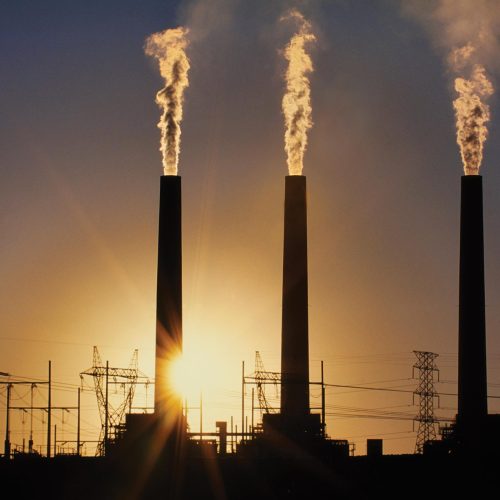

© US Global Change
Trump says the future of AI is powered by coal

The day before several major tech leaders appeared before Congress, begging for ways to get more energy for the nascent American artificial intelligence industry, Donald Trump signed an executive order offering a solution: increased coal production.
As part of a series of executive orders released Tuesday designed to promote the rapid growth of the coal industry â opening federal lands for mining, designating coal as a critical mineral, and using his emergency authorization powers to relax environmental regulations on coal â Trump signed one explicitly aimed towards powering energy-hungry AI data centers using Americaâs âbeautiful clean coal resourcesâ, as Trump described it. The order directs the Commerce, Energy, and Interior Departments to conduct studies determining âwhere coal-powered infrastructure is available and suitable for supporting AI data centers,â as well as whether it would be economically feasible.Â
âYou know, we need to do the AI, all of this new technology thatâs coming on line,â Trump said on Tuesday during a signing ceremony for all four executive orders. âWe need more than double the energy, the electricity, that we currently have.â
…